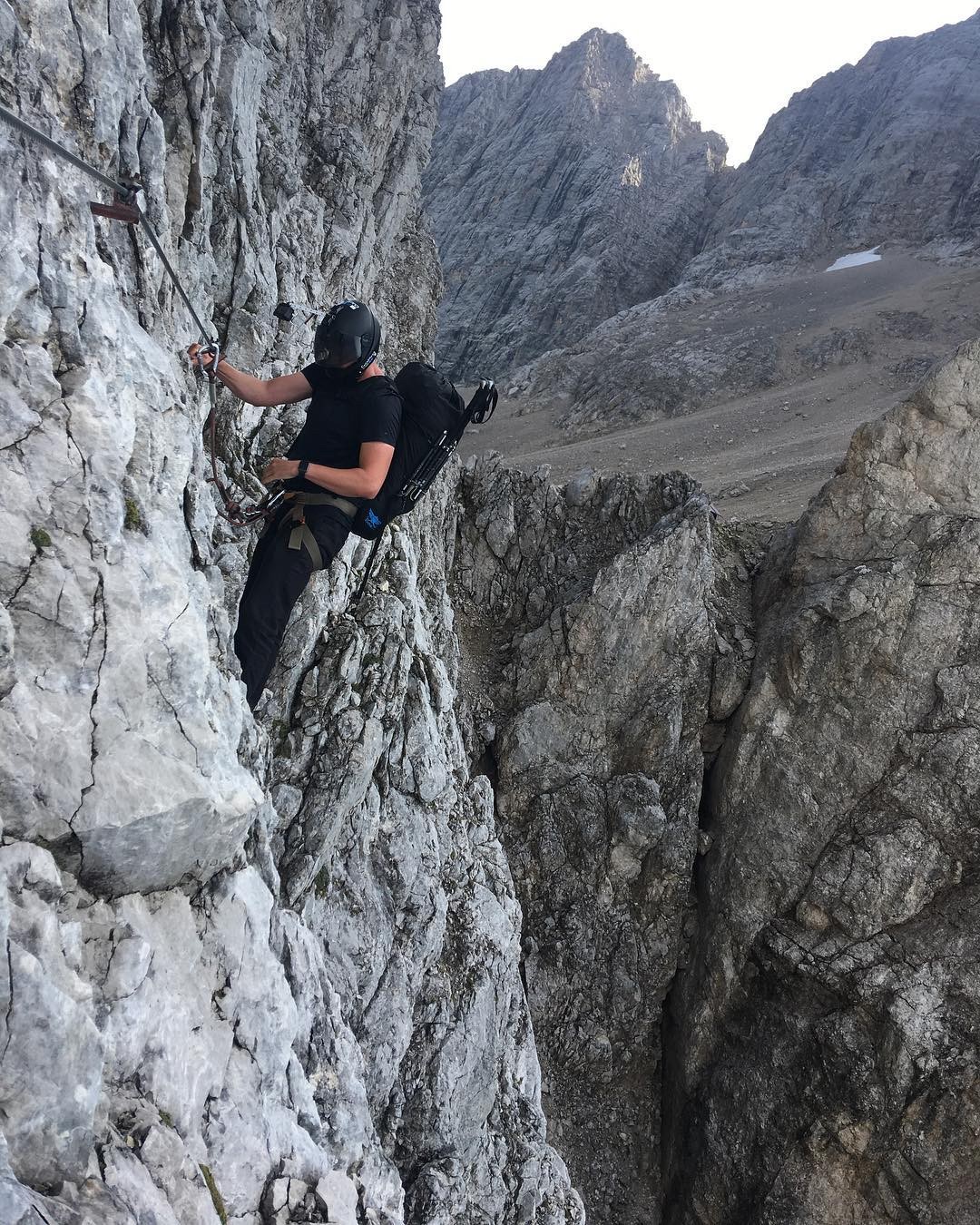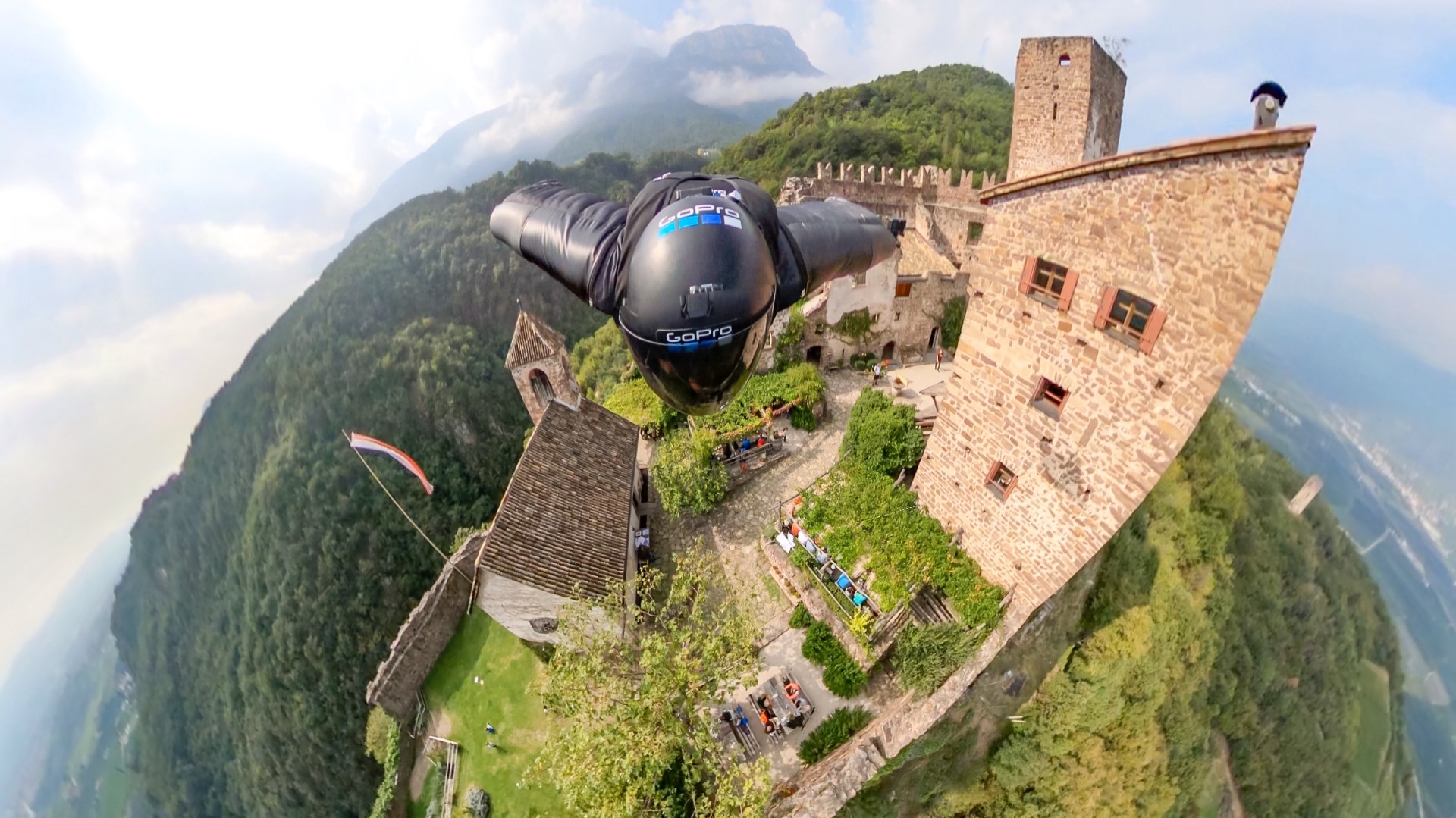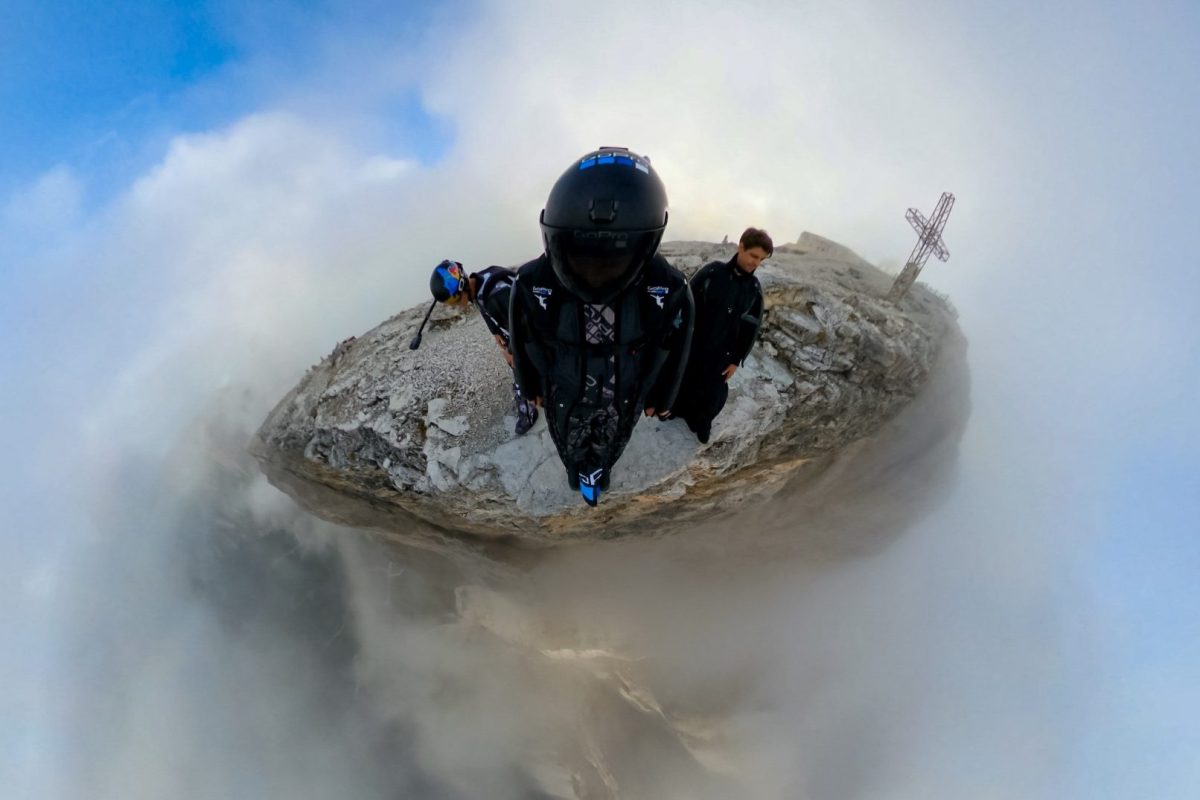Jeb Corliss is one of the world’s most accomplished wingsuit flyers and BASE jumpers. He has done jumps from sites like Paris’s Eiffel Tower, Seattle’s Space Needle, the Christ the Redeemer statue in Rio de Janeiro and the Petronas Twin Towers in Kuala Lumpur. He also oversaw the groundbreaking wingsuit sequence of the Point Break remake in Switzerland. Below, he discusses one of the more dangerous wingsuit flights he’s completed, as told to Charles Thorp.
My journey to getting into a wingsuit started when I was a child, really. I think we all had dreams of flying when we were growing up. That seems pretty universal between all of humanity, ever since had the ability to witness what the birds and other winged animals were doing.
But when I first started jumping out of planes, wingsuits weren’t really a thing. So I started with skydiving when I was 18 years old, and I started BASE jumping about three years later. I was actually on one of my very first BASE-jumping trips in Italy when this Russian guy showed up with a homemade wingsuit that he had made by sewing fabric wings into a wetsuit.
Sitting there watching him jump off the cliff, and getting the kind of distance that he was able to get with that with that homemade suit, gliding along the sky farther than everyone else, we knew that it was going to be the next big sport. Everyone on that cliff in Italy knew that it was going to be the future. That is also when I knew that that is what I wanted to do, too.

I immediately started researching where I could get one, and at the time you couldn’t find one anywhere, you had to build it. This was back in early 1999. Eventually this company came along, right as I was really starting to get impatient, called BIRDMAN, and they were building the very first wingsuits. I instantly contacted them and told them that I wanted one in black as soon as possible.
Once the wingsuit showed up at my house, I immediately went to my local drop zone to do a few test runs. I only had about 150 skydives under my belt at the time. I probably shouldn’t have been allowed to have one. There were no instructional manuals and there were no classes. There was really no pre-existing knowledge at all.
I had only done about five skydives with it when I decided to take it with me on a trip I was doing to Africa. On that trip we found this massive cliff with a 1,600-foot main wall, with a massive ledge and then another 900-foot cliff. I was with a Russian friend of mine who had a lot more experience. He did the jump first, and completed it.
I realized when I jumped off that cliff, that I didn’t have nearly the amount of experience I needed, but I just went with my gut. There was a point in which I saw a crack in the rock, and instead of deploying my parachute I decided to glide through that space in the rock and then release my parachute after clearing the obstacle. I probably only had about 20 feet of clearance, going over 100 miles per hour. In essence, I did one of the first proximity wingsuit flights without even considering it.
Looking back I absolutely should have never be there or trying that. How I survived through that early period of my career is beyond me. I wish I only had one story like this, because it is so irresponsible, but that is not the case at all. That is why I got so injured so much in the early part of my career.
That was my first proximity flight, but I believe that wingsuiting has made it to the popularity it has today because of the “Crack” in Switzerland. It is located in the town of Walenstadt, just about an hour and a half north of Zurich. You can actually see Austria from the top. You get that true sensation of flying. Of course technically you are falling towards the ground, going very, very fast, but it gives you that feeling of being a bird. This location gives a true sense of what wingsuit flying is all about.
The cliff itself is over 5,000 feet high, so just about a mile or so. It is absolutely gigantic. There is a cable car that takes you up to the top. Of course when I was there filming the wingsuit sequence for Point Break we were using helicopters to get up and down, but using the cable cars is usually the way we commute to it. The cable car allows a wingsuit flyer to be able to do multiple jumps through the course of a day, because it is so easy to get back up.

The Crack is interesting as a wingsuit flyer because not only is it just a huge cliff, but it also has all of these really interesting terrain features. Between the cliff you jump off of, and where you pull your parachute, there is a great diversity of ground. The difference between doing a jump off a cliff like that and jumping out of a plane is reference points.
Going through the Crack you are whipping past the ground, between trees, and over rocks, making the imagery way more impactful. The visuals really hit. You almost feel like Luke Skywalker going through the tunnel to take out the Death Star. Those reference points help you see how fast you are really going, which is over a 100 miles per hour.
Not only is the Crack amazing as far as how it feels to go down it, but it also allows you to get cameras into places where you can accurately show the flights. I flew in a wingsuit for about a decade without capturing it authentically on film. Not until these companies like GoPro came around, and allowed us to show our perspective on the way down. And it was also important for the cameras to be able to handle the stress of what we were doing.
But there are also parts of wingsuiting that are impossible to convey over video. Like the amazing sense of control that an experience flyer can get once you have a great jump off the cliff. You feel like you can make yourself go anywhere you want, of course that is not exactly true, but it has definitely led to pushing the boundaries of proximity.
There is also a phenomenon that occurs during wingsuiting, where you can cheat yourself into being in “the now” or flow state, which is extremely difficult under normal circumstances. Existing only in that very second, and not thinking about anything before or after. Every decision has life or death hanging in the balance. There are monks that spend their lives trying to accomplish that level of awareness, and being able to trick myself into it, even if just for a minute it just one of the reasons I love the sport.
This series is done in partnership with the Great Adventures podcast hosted by Charles Thorp. Check out new and past episodes on Apple, Spotify or wherever you get your podcasts from. Past guests include Bear Grylls, Andrew Zimmern, Chris Burkard, NASA astronauts and many others.
Whether you’re looking to get into shape, or just get out of a funk, The Charge has got you covered. Sign up for our new wellness newsletter today.




















